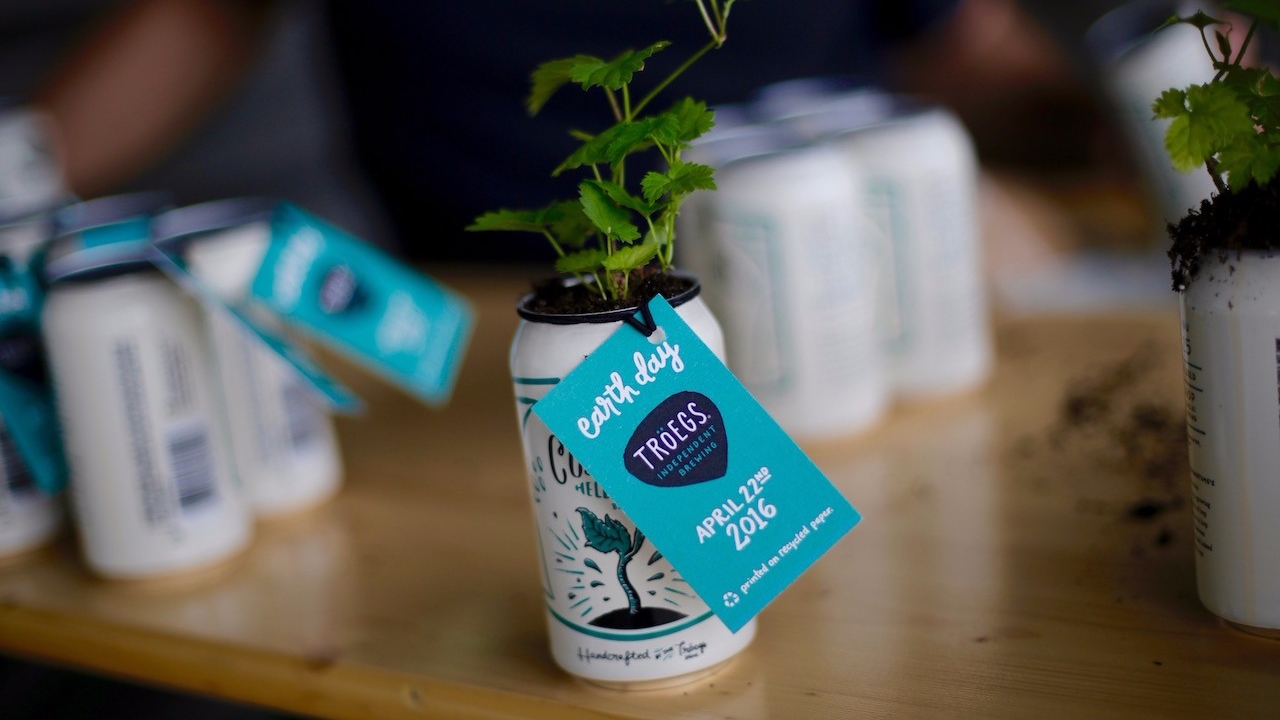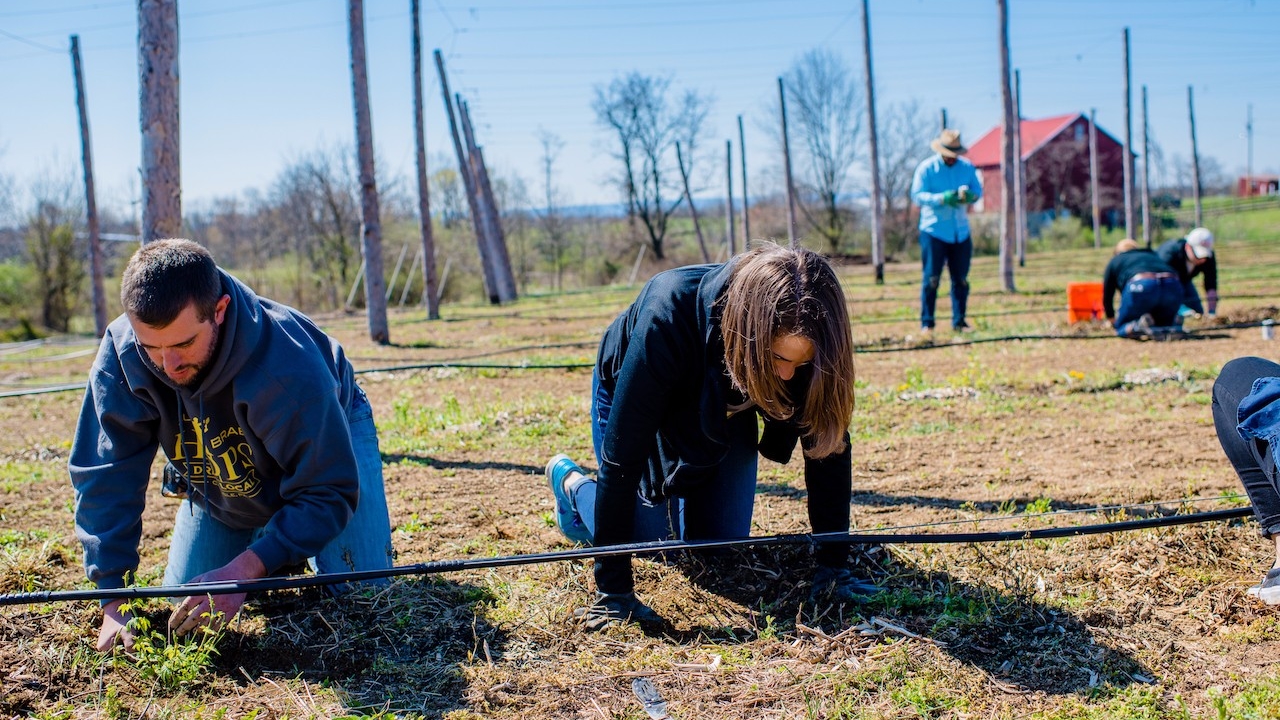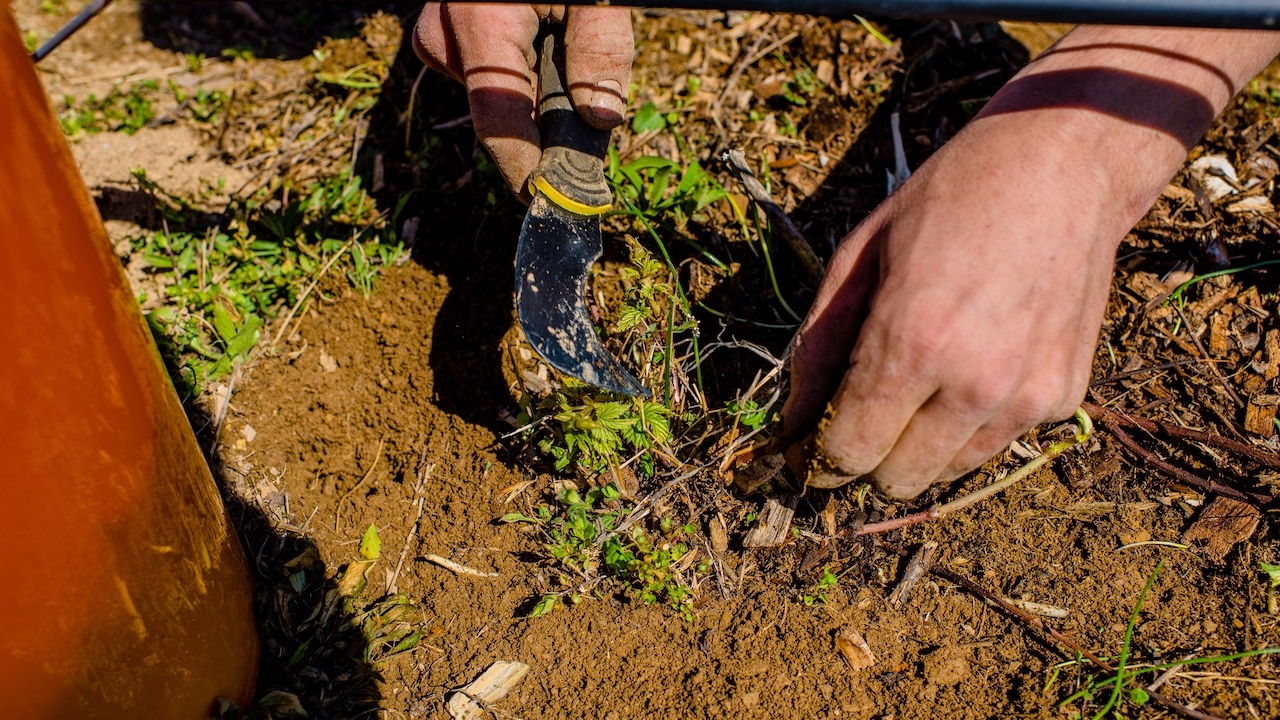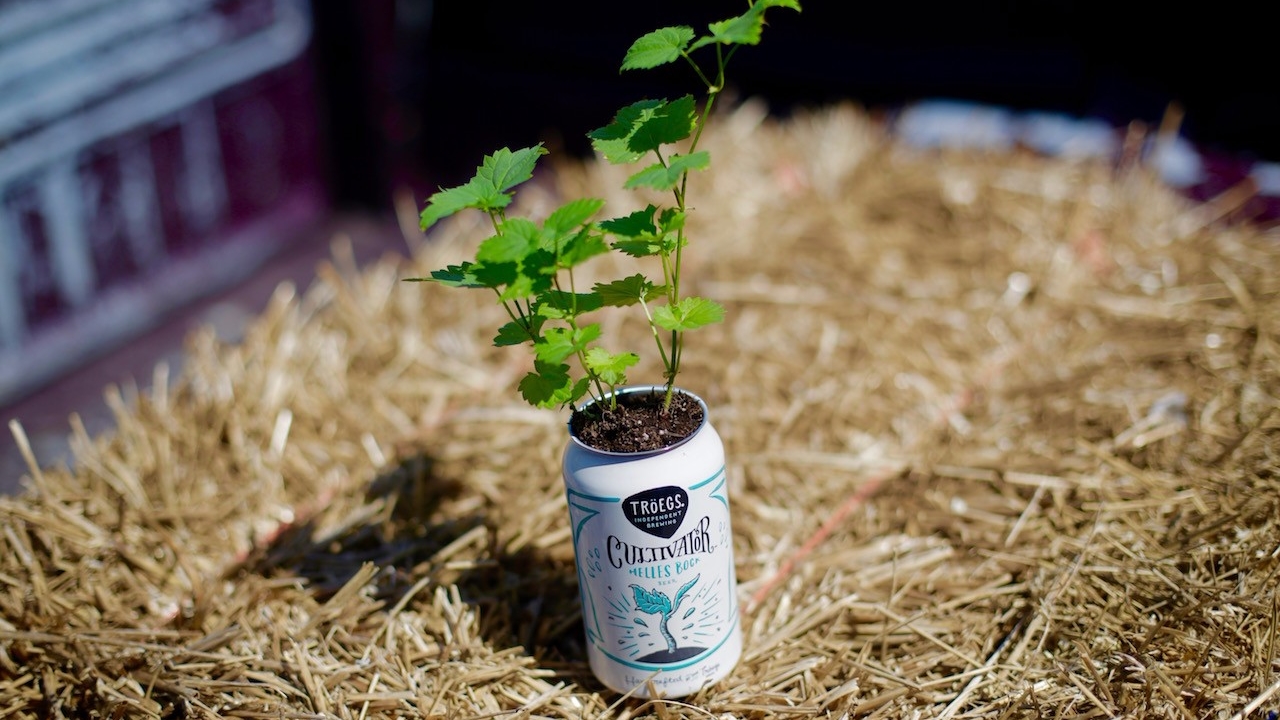To celebrate Earth Day, we’re giving away 100 Chinook hop plants at the brewery today. If you’re one of the lucky ones, here’s a little insider info to give your plant a healthy, productive life.
First thing’s first: Get it in the ground. That can, or even a large pot, can’t contain this eager little plant for long.
“Pots are too constrictive,” says Adam Dellinger, owner and operator of Carlisle’s Sunny Brae Hops. “Root structure will grow 4 or 5 feet in radius and 6 feet down.”
So, recycle that can and find a spot outside with lots of sun (south-facing is best), a little breeze and good access to water. Water is key.
“Hops are very thirsty plants,” says Adam. “Keep them moist, but not soaking wet.”
You might get more than one shoot, or vine (or, if you want to get really beer-nerdy about it, “bine.”) And this is where things get tricky. These vines want to climb, and they need something to climb on.
You can tie a piece of twine from a stake in the ground to a point about 7 or 8 feet up a tree or the side of your house. Or, in the first year of hop growth, a long stake or even a large tomato cage will do the trick. But be warned: Mature plants can grow 25 feet and up!
And you need to “train” the vines to climb. More than three per string is too much, so trim them back and wrap them clockwise around the support. (If you wrap them counterclockwise, they’ll fall right off.) Keep the area clear of weeds and guide your three little vines as they climb.
It’s easy to overthink fertilizers, Adam says, but it doesn’t have to be too difficult.
“Miracle-Gro and fish emulsion are fine,” he says. “My only caution would be to stop fertilizer additions around the beginning of July, when the plant stops growing vertically and begins growing cones. Excess nitrogen can negatively affect cone formation.”
Come harvest time — likely sometime from mid-August through September — you should be swimming in Chinook hop cones. Adam recommends hand-harvesting and leaving the vine intact until first frost, then cutting it back. “If you cut down the whole vine at harvest, there is some energy left that can’t go down in the roots for winter storage and help the plant rebound next year.”
What to do with all those hops? You can home-brew, of course. Or steep them for a hot tea. In the olden days, Adam says, people would take small amounts of dried hops, pack them in a satchel and put them in their pillow as a sleep aid. He’s never tried it, though.
“I work really hard during the day,” he says with a laugh. “So I have no problem sleeping at night.”
Hungry for more hops? A team from Tröegs recently visited Sunny Brae to do some spring pruning. We brought a whole mess of hop shoots back and they’re pickling as we speak. Watch for them on our Snack Bar’s cheese board real soon. Stay tuned for details.




